
Mindful Spa Sessions: The New Era of Wellness and Inner Peace
Wellness mindfulness treatments, in today’s fast-paced world, relaxation is no longer enough — people crave deeper rejuvenation, both for the body and the mind. Modern spas are responding to this shift by integrating meditation and mindfulness practices into their treatments. These approaches go beyond pampering; they invite guests to reconnect with themselves, slow down their thoughts, and experience calm on a deeper level.
From floating therapy and guided breathing sessions to sound bowls and stillness rooms, spa experiences are evolving into holistic journeys that nurture inner balance. This new wave of wellness mindfulness treatments combines traditional bodywork with mental clarity techniques, creating a sanctuary where peace, awareness, and healing coexist.
The Evolution of Spa Culture: From Relaxation to Mindfulness
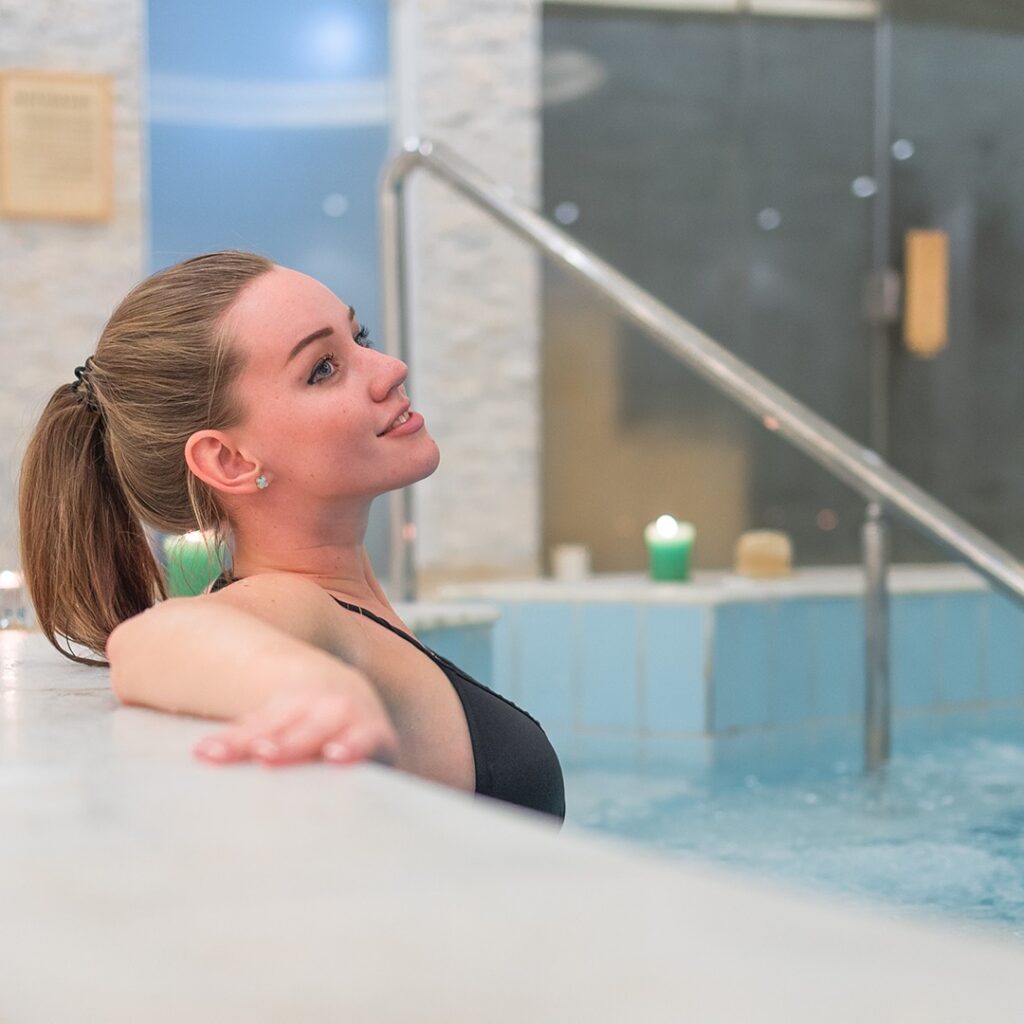
For decades, spas focused mainly on physical rejuvenation — massages, facials, and body scrubs were designed to release tension and beautify the skin. However, as stress levels and digital fatigue rose globally, the wellness industry began to realize that true restoration must include the mind as much as the body.
Mindfulness — the art of being fully present — has become a global phenomenon, and spa professionals have embraced it wholeheartedly. The result? A new generation of mindful spa sessions that blend ancient meditative practices with modern therapies.
Guests are no longer seeking a quick massage; they want to feel grounded, centered, and emotionally reset. Spas now integrate breathwork, meditation, aromatherapy, and even silent zones to help guests find that deeper state of serenity.
Why Mindfulness Belongs in the Spa Experience
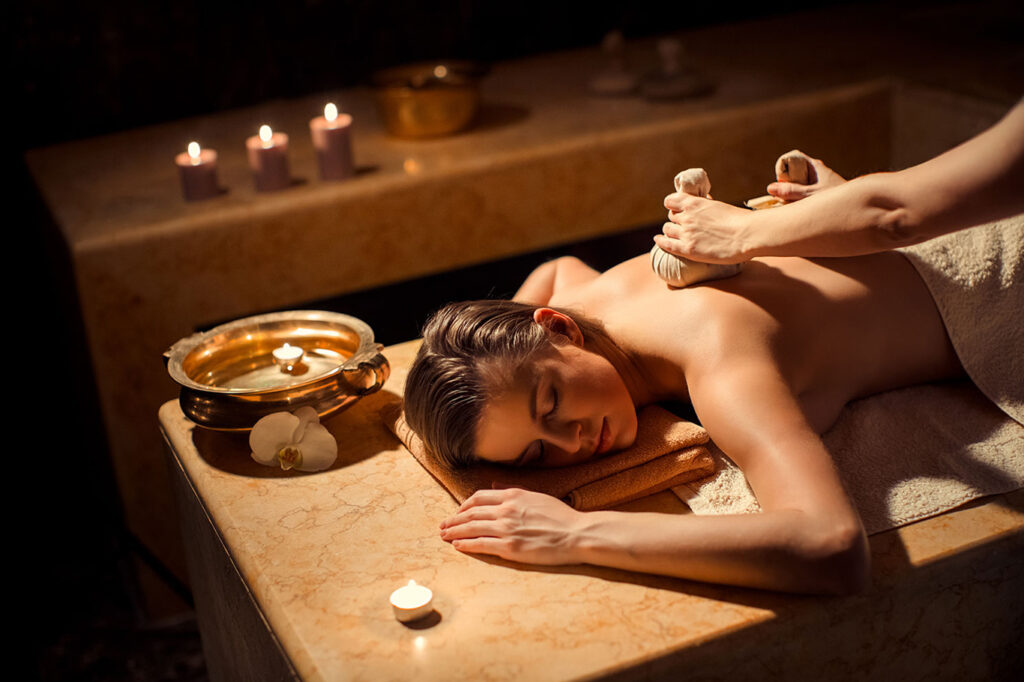
At its core, mindfulness invites us to slow down and observe our sensations without judgment. When combined with traditional spa services, mindfulness amplifies their benefits — turning a simple treatment into a transformative experience.
1. Enhancing relaxation through awareness
During a meditation and massage session, the guest is encouraged to stay aware of every touch, breath, and bodily sensation. This awareness deepens relaxation, enhances circulation, and helps release mental tension that traditional massages might miss.
2. Promoting mental clarity
Mindfulness techniques quiet the mind, allowing guests to let go of mental clutter. Many report that after a mindful treatment, they not only feel physically lighter but also mentally sharper.
3. Supporting emotional healing
Stress, anxiety, and burnout often manifest as tight muscles or shallow breathing. By integrating meditation into spa services, these emotional blockages can be gently released — restoring both inner and outer balance.
4. Long-lasting results
Unlike conventional treatments, the benefits of wellness mindfulness treatments extend beyond the spa visit. Clients often continue mindful breathing or meditation practices at home, maintaining the state of calm they achieved.
Floating Therapy: Finding Stillness in Silence
One of the most powerful innovations in mindful spa design is floating therapy, also known as floatation or sensory deprivation. Guests lie in a pod filled with warm, buoyant saltwater that supports the body completely.
As external stimuli fade away — no light, no sound, no gravity — the mind drifts into deep relaxation, similar to meditation.
Benefits of floating therapy
- Total sensory rest: The absence of noise and physical strain allows the nervous system to reset.
- Enhanced mindfulness: The experience encourages awareness of breath and body sensations.
- Pain relief and muscle recovery: The magnesium-rich salt water soothes soreness and inflammation.
- Improved sleep quality: Many guests report better sleep after just one session.
In essence, floating therapy is the perfect embodiment of a mindful spa session — quiet, restorative, and deeply introspective. It teaches the body and mind to coexist in stillness, which is rare in modern life.
Guided Breathing: The Heart of Meditation and Massage
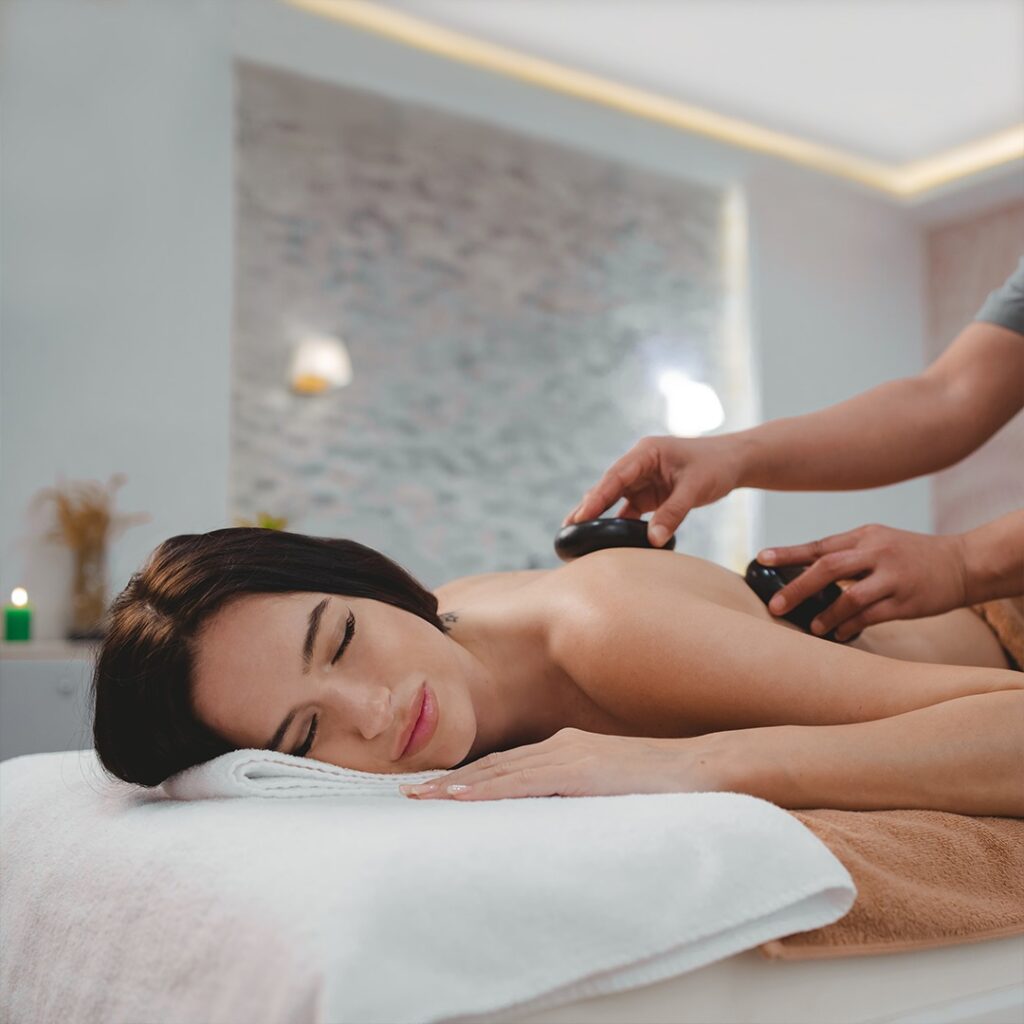
Breathing is the simplest yet most powerful mindfulness tool. Spas worldwide now integrate guided breathing techniques into massages, facials, and body treatments to deepen relaxation and enhance emotional balance.
The connection between breath and touch
When a therapist synchronizes massage movements with a client’s breathing rhythm, the session transforms into a moving meditation.
For example:
- Slow, deep breaths calm the parasympathetic nervous system.
- Gentle exhalations help release physical tension.
- Conscious inhaling enhances oxygen flow, revitalizing the body.
Popular breathwork techniques in spas
- Box breathing – Inhaling, holding, exhaling, and pausing for equal counts. It reduces anxiety and sharpens focus.
- Diaphragmatic breathing – Encourages full oxygen exchange and helps lower heart rate.
- Alternate nostril breathing – A yogic practice that balances energy channels and clears the mind.
Incorporating breathwork into wellness mindfulness treatments not only relaxes guests but teaches them techniques they can use daily for stress management.
The Resonance of Sound: Healing with Sound Bowls and Vibrations

Sound therapy has ancient roots — used for centuries in Tibetan and Indian traditions to restore harmony to the body and mind. Now, sound bowls are finding their place in spa treatment rooms worldwide.
During a mindful spa session, sound bowls are placed near or even on the body. As the therapist strikes or circles them, they produce deep, resonant vibrations that travel through the skin, muscles, and bones.
The benefits of sound bowl therapy
- Energetic balance: Vibrations help release energetic blockages and promote flow through the body’s meridians.
- Stress reduction: The sound frequencies induce alpha and theta brainwaves — the same states achieved during meditation.
- Physical restoration: The rhythmic vibrations help relax muscles and support lymphatic flow.
- Emotional clarity: The tones can evoke emotional release and mental stillness.
Sound bowls are often combined with meditation and massage, guiding guests into a profoundly peaceful state. The body unwinds, the breath slows, and the mind gently settles into silence.
Stillness Rooms: Designing Spaces for Presence
Modern spas are evolving beyond treatment rooms to create stillness rooms — serene spaces dedicated to silence and mindfulness before or after therapy sessions.
These areas are softly lit, often featuring natural materials like wood, stone, and flowing water. Guests can sit quietly, practice breathing, or simply observe their thoughts.
Purpose of stillness rooms
- Transition from stimulation to calm: Many guests come to the spa after busy days. A stillness room prepares the mind for deeper relaxation.
- Integration after treatments: Instead of rushing out after a massage, guests can absorb the full benefits in silence.
- Mindfulness practice: These rooms encourage moments of meditation, gratitude, or reflection.
The stillness room concept represents the heart of the mindful spa experience — a reminder that true wellness lies not in doing, but in being.
Combining Meditation and Massage: A Holistic Practice
When meditation merges with massage, the result is a treatment that nurtures both body awareness and inner calm. This integration turns touch into a tool of mindfulness.
What happens during a meditation and massage session?
- Grounding phase: The therapist guides the guest through slow breathing or visualization to settle the mind.
- Mindful touch: Each stroke of the massage is performed slowly and rhythmically, encouraging full awareness of sensations.
- Silent focus: The therapist and guest share moments of silence to deepen the meditative state.
- Reflection: After the session, guests may rest or journal to process the experience.
Benefits of combining meditation and massage
- Deeper muscle relaxation
- Lower stress hormones (cortisol)
- Improved emotional regulation
- Heightened body-mind connection
- Long-lasting calm
This synergy defines a new wave of wellness mindfulness treatments — blending physical healing with conscious awareness.
Aromatherapy and Mindfulness: Scent as a Path to Presence
Scent has the power to anchor the mind in the present moment. In mindful spa sessions, essential oils are used not just for fragrance, but as tools for awareness and healing.
Common aromatherapy blends for mindfulness
- Lavender & frankincense: Calms the nervous system and enhances focus during meditation.
- Sandalwood & cedarwood: Grounds emotions and deepens breathing.
- Citrus oils: Invigorate and awaken the senses for clarity.
Therapists often invite guests to inhale deeply before the session, encouraging them to anchor their awareness in the scent. This simple ritual transforms a typical treatment into a sensory meditation.
The Rise of Wellness Mindfulness Treatments in Modern Spas

Globally, spas are redefining their mission — from places of indulgence to centers of conscious well-being. This transformation reflects a broader social shift: people are seeking mental health, emotional balance, and spiritual renewal, not just beauty or relaxation.
Key trends shaping mindful spa design
- Integration of meditation spaces – From group mindfulness classes to private meditation corners.
- Therapist mindfulness training – Practitioners learn presence-based communication and intentional touch.
- Technology detox zones – Guests are encouraged to leave devices outside to reconnect with themselves.
- Customized mindful rituals – Personalized treatments combining massage, sound, scent, and stillness.
Luxury and wellness resorts now promote mindful spa sessions as signature experiences — offering guests a refuge from mental overload and digital fatigue.
Corporate Wellness and Mindful Spa Experiences
Another growing sector is corporate wellness, where companies partner with spas to provide stress relief for employees. Mindfulness-based treatments are especially effective for professionals facing burnout.
Benefits for organizations
- Improved focus and productivity after mindfulness spa programs.
- Lower absenteeism due to stress-related illnesses.
- Enhanced emotional resilience and teamwork.
Workshops often include short guided meditations, breathing exercises, and meditation and massage packages that help restore balance after intense workloads.
This integration proves that wellness mindfulness treatments are not just personal luxuries but essential tools for sustainable performance and emotional health.
Home Practice: Bringing the Spa Mindset Into Everyday Life

A visit to a mindful spa can serve as inspiration for daily rituals. Guests are encouraged to continue simple practices at home:
- Begin mornings with 5 minutes of deep breathing before screens.
- Take mindful baths with essential oils, focusing on sensation and warmth.
- Play sound bowls or ambient music for evening relaxation.
- Create a personal stillness corner — a chair, candle, and quiet space for reflection.
Consistency is key. When mindfulness becomes a daily habit, the peace experienced at the spa extends into every part of life.
The Science Behind Mindful Spa Therapies
Modern research supports what ancient traditions have always known: mindfulness changes the brain. Studies show that mindful breathing and meditation can:
- Reduce activity in the amygdala (the brain’s stress center).
- Increase gray matter density in areas linked to empathy and self-awareness.
- Lower cortisol levels, reducing inflammation and fatigue.
When these effects are combined with massage or hydrotherapy, they create a powerful synergy of mind-body healing. Clients often describe feeling “reset” — both physically and mentally — after a single session.
Designing the Future: Spas as Mindfulness Sanctuaries
Looking ahead, the next generation of spas will focus even more deeply on consciousness, emotional intelligence, and holistic healing.
Expect to see:
- Floating meditation rooms with ambient soundscapes.
- AI-guided mindfulness pods that tailor breathing rhythms to heart rate.
- Energy-balancing treatments integrating crystals, vibrations, and aromatics.
- Eco-conscious environments where sustainability complements mindfulness.
These innovations reinforce the idea that wellness is not a trend — it’s a lifestyle. And at the center of it all lies mindfulness: awareness, stillness, and connection.
Conclusion: A New Definition of Relaxation
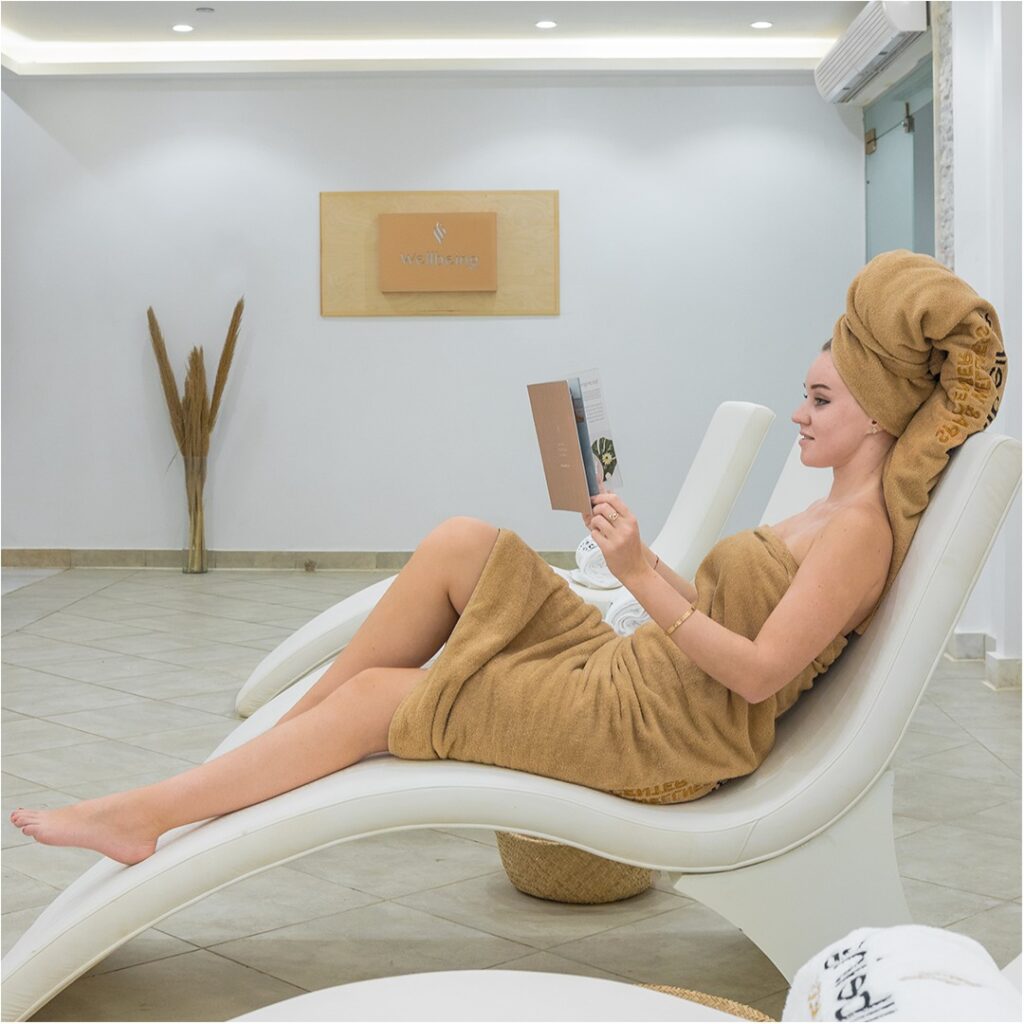
The integration of meditation and mindfulness into spa services marks a profound shift in how we define relaxation. It’s no longer just about soothing muscles — it’s about aligning body, mind, and spirit.
Whether through floating therapy, sound bowl vibrations, guided breathing, or time spent in stillness rooms, these experiences invite us to pause and rediscover presence in a world that rarely stops.
Mindful spa sessions represent the next evolution of wellness — treatments that nurture awareness as much as they relieve tension.
By embracing wellness mindfulness treatments, spas are not just offering indulgence; they are teaching a skill — the art of being here, now.
And in that stillness, true healing begins.



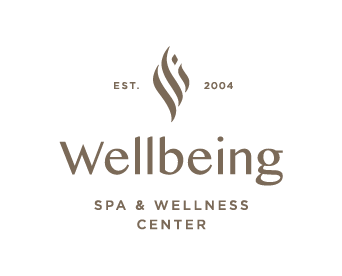

Leave a Reply